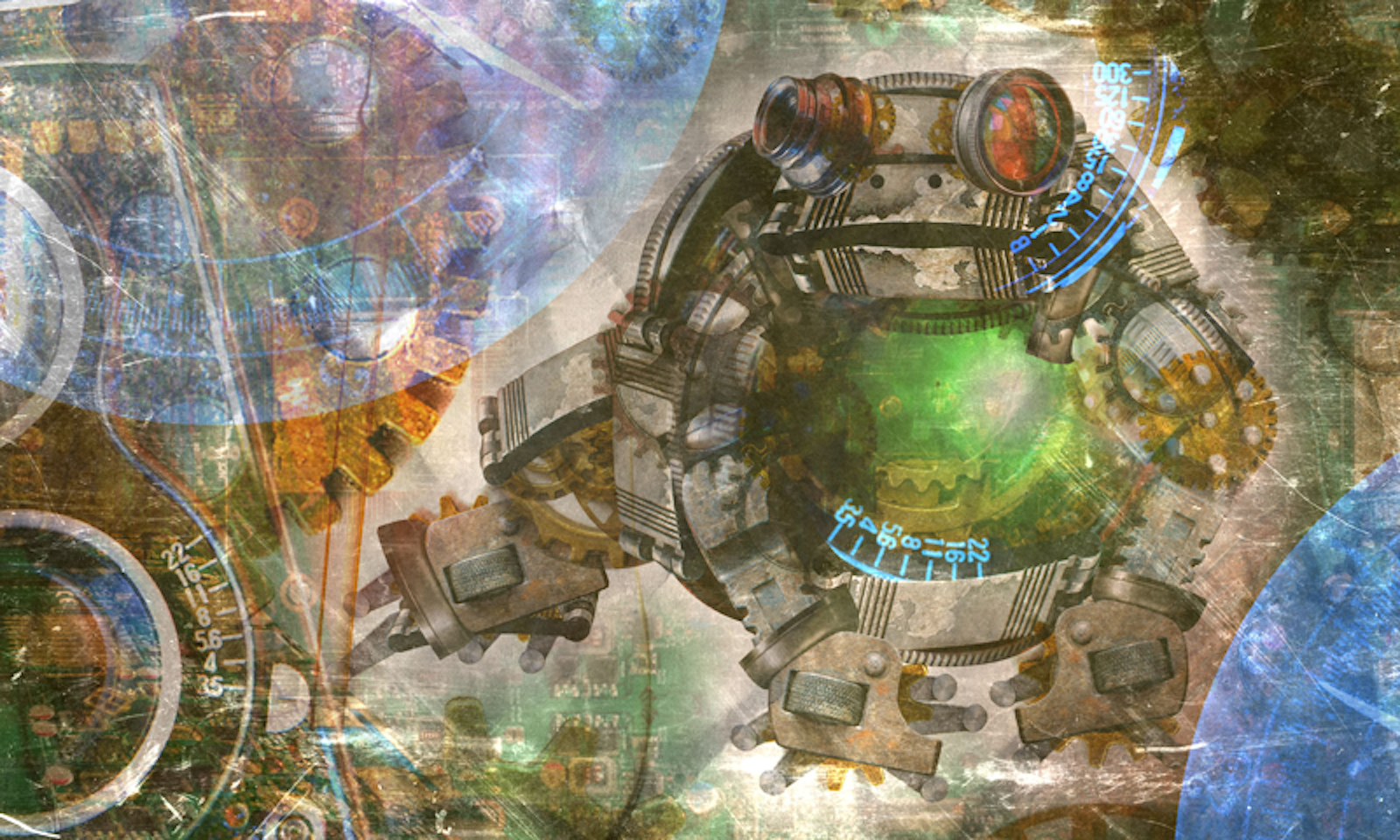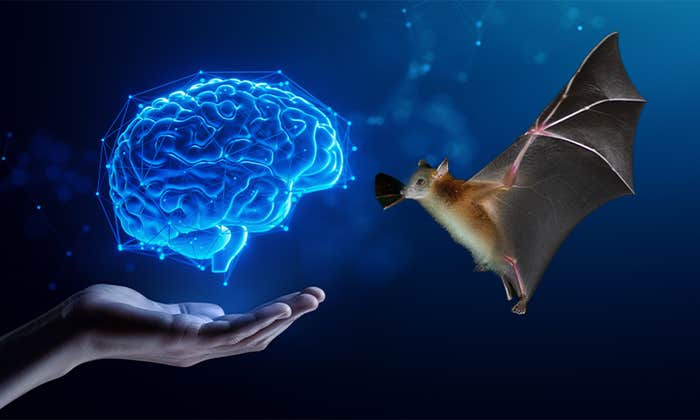They appear, at first, like so many toy tops spinning around a petri dish, etching squiggly patterns on the plate as if it were an ice rink. But soon enough, their work makes you realize that these tiny dervishes are, unmistakably, alive. You are in the presence of xenobots, which a few years ago made headlines as the world’s first living robots: computer-modeled critters that can perform useful tasks and even repair themselves. Recently, these manufactured organisms showed off yet another hallmark of life: Xenobots are the first created organisms that can self-replicate.
The four scientists that created the xenobots—computer scientist Josh Bongard, Tufts University biologists Michael Levin and Doug Blackiston, and roboticist Samuel Kriegman—are a motley crew and, when together, even they find it hard to resist the “roboticist, computer scientist, and two biologists walk into a bar” joke. In their recent paper in the Proceedings of the National Academy of Sciences, published in December 2021, the researchers say that the abilities of their xenobots suggest that “future technologies may, with little outside guidance, become more useful as they spread, and that life harbors surprising behaviors just below the surface, waiting to be uncovered.” They also incorporate their creator’s diverse backgrounds: At once designed by a computer and completely organic, xenobots challenge the boundary between biology and robotics, and they promise to change how we think about life and technology.
He watched as the frog cells animated themselves into another form of existence.
We normally think of robots in a Star Wars mold—shiny droids with English accents that co-pilot spaceships, and darling custodian droids that produce brooms and dustpans from their stumpy casings like progenitors of the Roomba. The creation of xenobots, however, suggests a much different trajectory for robots: life forms that are programmable yet completely bereft of computer chips and silicon. Instead of droids and Roombas, the robots of the future might resemble a school of tadpoles collecting microplastics from the ocean or a colony of ants piling contaminants from polluted soil.
“Xenobots are actually closer to the original concept of a robot,” Bongard, an evolutionary roboticist at the University of Vermont, says, noting that the word “robot” actually comes from a play written over 100 years ago called Rossum’s Universal Robots, where robots were made with some strange biological muck, not metal. “So robots were originally conceived as something already between machine and organism. It was only after the technological revolution that we started to think of robots as C3PO.”
The idea of a machine that can create other machines has long been a dream of robotics. In the 1940s, the polymath scientist and engineer John von Neumann conceived of large-scale self-replicating machines that would take raw materials from their surroundings in order to duplicate themselves. This became a nightmare in science-fiction tales like The Matrix, which presented a post-apocalyptic world where colossal, dark-metaled robots took us as their source material, transforming human bodies into batteries. But Levin, who specializes in regenerative medicine at Tufts University, finds this worry a little far-fetched.
“In a world full of human engineered pathogens and genetically modified organisms,” Levin says, “it’s surprising anyone would be worried about xenobots when we can control their tiny existences and engineer their lifespans.” Blackiston, a frequent collaborator with Levin, says, “We’ve seen that happen with invasive species and genetically modified organisms, but this isn’t that kind of system.” Xenobots are not like genetically engineered organisms, like the modified mosquitoes released last year in Florida. “This is a really contrived, petri dish system,” Blackiston says, “so unless you have an impossible amount of frog stem cells that are for some reason in your pond or local environment, this is not a system you’ll ever see replicate in the wild.”
Xenobots are the first created organisms that can self-replicate.
Xenobots are made from embryonic cells of the African clawed frog Xenopus laevis, the darling amphibian of biology on account of the 10,000 eggs that they lay, each of which “develop into perfect little embryos in front of your eyes in a petri dish, allowing them to be manipulated more easily than, say, a mouse embryo, which grows internally so it’s harder to get to,” Levin says. “But there’s nothing magical about frog cells that are causing this. Any embryo skin cells can be transformed into a xenobot.”
Normally, of course, if you remove a skin cell from a creature, you get a dead skin cell. “What’s interesting here is that the skin cells that are normally for sitting passively outside of the frog and keeping out bacteria, when you put them together in this way, they spontaneously create a novel creature with repurposed machinery,” Levin says. “The cilia, for example, are little hairs usually on the skin to move mucus around the frog to keep its body moist, but here, those hairs have been repurposed to move the creature around.”
Xenobots are programmed before they are created. Kriegman developed the program for xenobots while a postdoc at the University of Vermont studying under Bongard. At the time, there was no way to create “soft” robots with squishy bodies to let them maneuver in small and delicate environments, like blood vessels, which rigid plastic or metal robots can damage. So Kriegman and Bongard created an algorithm that took real-world environments and went through billions of robot shapes and designs in order to make soft robot models that could potentially perform useful tasks.
Kriegman and Bongard’s program started out by generating models of soft robots that could theoretically “walk,” although “scoot” is perhaps more accurate. The algorithm initially produced a series of robots that looked like pulsating Rubik’s Cubes made of Play-Doh. But as the robot teetered across the surface, it would shape-shift, slowly “evolving” through several iterations of its Minecraft-like shape across its “lifetime” of walking experiences, eventually settling into a shape that was more or less suitable for strutting. Kriegman and Bongard took the fastest designs, and presented them to Blackiston and Levin.
“The problem was that, while we could go through billions of designs really quickly using a beautiful evolutionary design method, it was really challenging to see how we could bring that design to reality with the synthetic materials available,” Kriegman says. “Doug accepted that challenge.”

Instead of trying to replicate a natural organism with synthetic materials, the team decided to use natural materials to build a robot. And with this breakthrough, the xenobots took the jump from computer program to organism.
Blackiston quickly got to work on several frog embryos. Something of a Pygmalion in a lab coat, he began by sculpting away the “animal cap,” which is a little cap of cells on the top of the embryo that would normally stretch over the body, creating the frog’s skin. Then he reshaped the harvested cells, like clay, into a tiny statue that he placed inside a petri dish with a little water. Finally, he watched as the cells animated themselves into another form of existence. The statue curled itself into a ball like a roly-poly and, four days later, it grew little hairs around its body and began using them to swim around the dish. The cells no longer belonged to Xenopus laevis—they had become xenobots.
As Kriegman and Bongard tweaked their algorithm to generate new shapes and designs for xenobots, Blackiston and Levin began building them and testing them for different tasks. A donut-shaped xenobot was able to collect little particles around the petri dish in its donut hole; another looked like a short, wobbly table (again, made of Play-Doh, they all look made of Play-Doh) with the stumpiest legs that it used to crawl about like an inchworm.
Xenobots challenge the boundary between biology and robotics.
The latest, most interesting iteration of the xenobot is shaped like a bean. It can spin around and collect tiny stem cells around the petri dish, squishing them together in the pinch of its fold and, in the process, assemble new xenobots that look and move like it does. “What’s amazing about the new study,” Levin says, “is that we’ve removed the skin cells from the frogs, reshaped them and placed them in a novel environment where they can’t reproduce how they normally would, and they’re replicating in a way that they would never replicate as part of the frog.” Xenobots can reproduce by gathering and manipulating loose cells in their environment into functional copies of themselves. This kinematic form of replication is, the team writes, “previously unobserved in any organism.”
The group is currently working on new designs to improve xenobots’ self-replicating abilities. Right now, they can achieve only four xenobot generations. Each “offspring” the xenobots produce are rounder than the “parent” bean. The bean-shape is optimal for replication, so their replication abilities wane as the generations become more spherical.
Blackiston concedes that self-replicating organic robots can seem mildly disturbing. “As a roboticist, you take sensors and motors and put them all together,” he says, “but when you say you can do that with an organism, with muscle cells and tissue, people start to freak out a little.” What’s unsettling about xenobots is perhaps what was so unsettling about the platypus when it first arrived in England in the late 18th century. The British naturalists who received the specimen thought it was the work of talented Chinese taxidermists who were known for stitching together convincing abominations. From the lofty perspective of their cravats, it seemed impossible for nature to produce a duck-billed, beaver-tailed, egg-laying mammal. The odd creature simply mixed and defied too many of nature’s categories. But there it was, a mammal with its impossible bill, swimming and laying eggs.
Bongard believes the xenobots present a similar challenge to us. While it’s usually easy to tell the difference between the natural and the artificial (this is a toaster, that’s a yorkie), the existence of the xenobot challenges that familiar dichotomy. They even evolve, and spontaneously—the evolution from frog skin cell to xenobot happens over days instead of millennia. And they are harbingers of a future with other, unknown robot forms that may include a mix of biological, evolved, and engineered components and software that defy the boundaries of biology, robotics, and computer science.
“Humans tend to break things up into pieces and categorize them, because it’s the only way we can build and understand them,” Bongard says, “but nature isn’t hobbled as we are.”
In xenobots, Levin sees an entirely new direction emerging for robotics and biology, one where nature is used in the service of technology, instead of technology attempting to replicate nature. “Nature is already an excellent engineer,” he says. “Cells already know how to build every organ. Why would we spend all the effort trying to artificially produce an arm when we could learn how to trigger the body into doing it for us?”
Marco Altamirano is a writer based in New Orleans and the author of Time, Technology, and Environment: An Essay on the Philosophy of Nature. Follow him on Twitter @marcosien.
Lead image: Ezume Images / Shutterstock


























